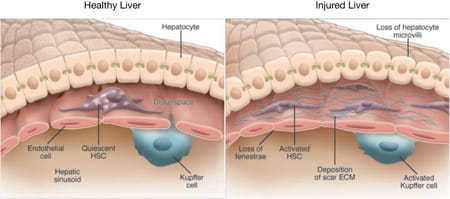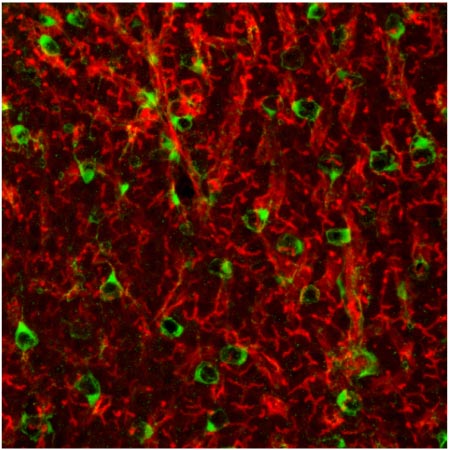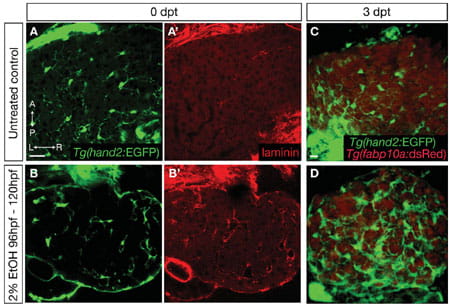Hepatic Stellate Cells
Hepatic stellate cells are liver-specific mesenchymal cells that play vital roles in liver physiology. In healthy liver, hepatic stellate cells are kept quiescent and contain numerous vitamin A lipid droplets, constituting the largest reservoir of vitamin A in the body. When the liver is injured due to viral infection or hepatic toxins, hepatic stellate cells transform into activated myofibroblast-like cells to generate scar tissue. In chronic liver disease, prolonged and repeated activation of hepatic stellate cells causes liver fibrosis as characterized by widespread scar formation and perturbation of liver architecture and function. Cirrhosis, the end stage of fibrosis, is among the leading causes of death worldwide with no cure except for liver transplant.
We developed the first zebrafish reporter line of hepatic stellate cells and showed that the zebrafish hepatic stellate cells share many similarities with their mammalian counterparts, including morphology, location, lipid storage, gene expression profile, and responses to liver injury.
Currently, we are using the power of imaging and genetics in zebrafish to investigate the contribution of hepatic stellate cells to liver development and regeneration. We also study the molecular mechanisms underlying their activation in liver injures induced by alcohol and other hepatic toxins. Finally, we are conducting high throughput chemical screens to identify drugs that influence the development and activation of hepatic stellate cells.






